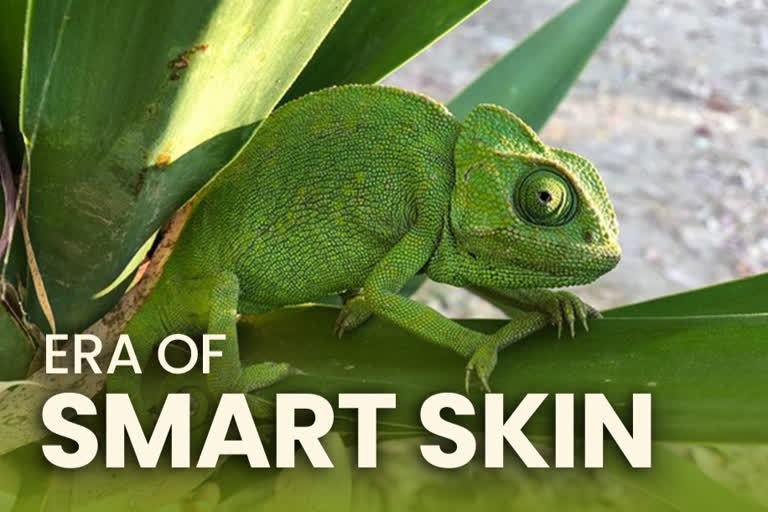Washington: After researching smart skins of animals like chameleons, researchers develop flexible smart skin that changes its color when comes in contact with sunlight and heat.
The study was published in the journal ACS Nano.
The hues of chameleon skin rely not on dyes or pigments as most colors do but instead on arrays of tiny structures known as photonic crystals. Light reflects from these microscopic surfaces and interferes with other beams of reflected light producing a color.
The hue changes when the distance between photonic crystals varies -- for example when a chameleon tenses or relaxes its skin.
To mimic these natural abilities, scientists have embedded photonic crystals flexible materials such as hydrogels and changed their colors by contracting or expanding the material like an accordion.
Read Also: China convicts 3 researchers involved in gene-edited babies
However, these large fluctuations in size can strain the materials and cause them to buckle. Khalid Salaita and colleagues wanted to take a closer look at chameleon skin and use what they learned to design a strain-accommodating smart skin.
By watching time-lapse images of chameleon skin, the researchers noticed that only a small fraction of skin cells contain photonic crystal arrays while the rest are colorless. The team reasoned that the colorless cells might help accommodate the strain when the photonic crystals contract and expand.
Inspired by this observation, the researchers patterned arrays of photonic crystals in a hydrogel and then embedded these arrays in a second, non-color-changing hydrogel that acted as a supporting layer. Upon heating, the resulting material changed color but remained the same size.
The smart skin also altered its hue in response to natural sunlight, similar to how a tetra fish does. The new material could someday find applications in camouflage, signaling, and anti-counterfeiting, the researchers say.



